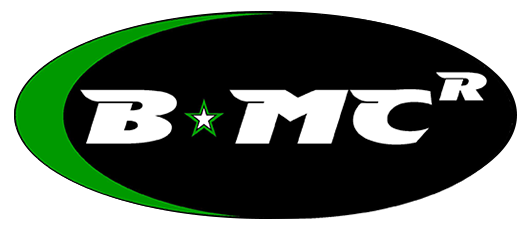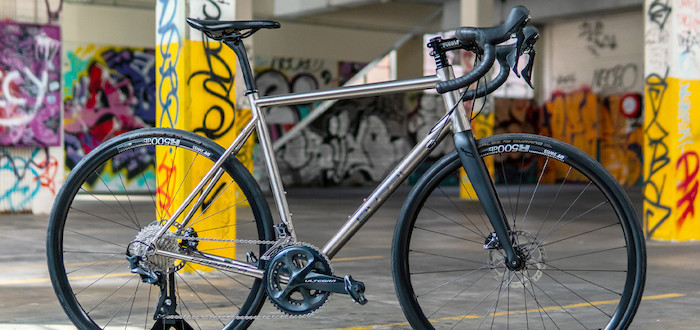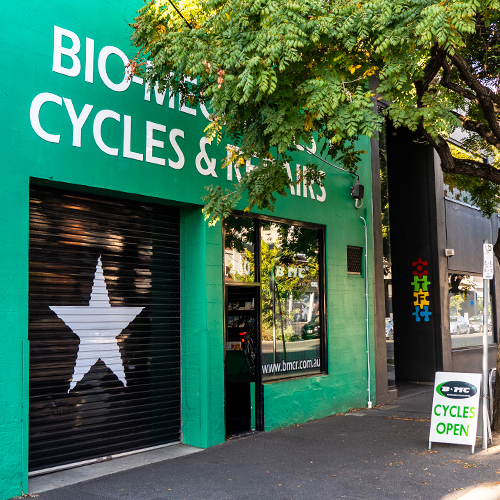The hidden dangers of buying a second-hand bike


Read this before you put any money down on a used bike
"Reluctant sale."
"Barely ridden."
"Meticulously serviced."
That bike you've spotted online looks great, and what a steal.
... Or is it?
Look, we don’t want to tell you to not buy a second-hand bike.
Maybe you want to test out a different riding discipline without spending too much money. Perhaps you'd like to avoid adding another bike to landfill. Or possibly you’ve just got a very limited budget.
All of these reasons are good ones to look into the used bike market.
The problem is that this market is full of bikes which contain some nasty—and expensive—surprises.
A customer recently came in with one he’d purchased from a reseller who said it was in good condition. Once we started working on it, however, we discovered that it wasn’t. The shifters weren’t fully functioning, the rear hub was about to fall apart…and that was just the beginning. That bargain bike ended up not being such a bargain after all.
That bike is, however, the reason why this blog post exists.

Over the past 20 years, we’ve seen too many customers purchase second-hand bikes in good faith which have turned out to have everything from hopelessly seized seat posts and shredded drivetrains to un-serviceable suspension, cracked rims, and even broken frames.
Forget checking tyre treads or looking for rusty cables. We’re going to show you the far more critical things you need to pay attention to—namely suspension, seat posts, service history, frames and wheels—so you don’t waste your hard-earned cash.
Ready to buy? Here’s what to look for in the used bike market, and what to avoid.

Problem area one: suspension
(Roadies and gravel peeps, don’t tune out; there’s stuff here that’s relevant to you, too.)
You probably know that suspension needs maintenance, but it can be more complex than anticipated, and can turn a seemingly good buy into a nightmare.
Check compatibility
Firstly, ensure the potential bike's suspension is actually still serviceable. Get clear photos of the forks and shock and do some research. Ask your local suspension service centre if they rebuild these models, and how much it typically costs. If they say it’s too old and parts are no longer available, walk away from the sale.
If the suspension turns out to be a proprietary system, proceed with extreme caution. Once a proprietary rear shock is damaged or worn out, you can’t just replace it with another brand or generation – they usually won’t fit the frame. You’re then stuck with a bike with dead suspension that can’t be repaired or replaced.
We go into a lot more detail on proprietary stuff here, but the TLDR is to avoid it in most cases if you can.

Check the condition
Once you’ve confirmed that the suspension can still be serviced, check it for wear.
Examine the stanchions and damper body, especially around the seals. If you see silver aluminium where the anodising has worn off, or if there’s oil residue or a sticky, grimy buildup, that fork or shock probably needs immediate attention, no matter how much the seller assures you that it "rides fine".
You’ll also want to push down on the suspension to test its responsiveness. If it feels rough or sounds squelchy, that also indicates servicing is required, and you’ll need to allow at least $300 per end to cover this, assuming there are no broken internals.
Don’t forget to check the dropper post as well. If it’s springy, it can be a few hundred dollars to service.

On road and gravel frames
Check to see if the frame has suspension built into it.
Several major brands incorporate this technology, such as Specialized’s Future Shock, BMC’s Micro Travel Technology, Wilier’s Actiflex system and Trek’s IsoSpeed. Sometimes the design isn't directly referred to as 'suspension', so be aware of alternative terms like the ones above.
If the bike you're looking at has this kind of suspension (no matter what name they're using for it), test it out—wiggle the area and try to get it to move sideways. If there’s lateral movement, don’t buy it.

Problem area two: seat posts
A seat post may not seem like a big deal, but can be a huge problem if it’s seized, cut too short or a proprietary system.
Is the seat post stuck in the frame?
Start by trying to adjust the seat height.
If the post won’t move, there’s a good chance it’s corroded inside the frame.
While some posts can be removed via penetrating oils and heat (and, let’s face it, brute force), others can’t come out without damaging the frame. In either case, it can be an expensive, and sometimes un-solvable, problem.

Has the seat post been cut?
Certain road, triathlon and time-trial bikes have seat posts which are part of the frame, rather than a separate component.
If the post has been cut to fit the seller’s leg length and you don’t have exactly the same proportions (what are the chances, really?), that saddle height will be wrong for you.

Is it a proprietary seat post design?
Many modern bike designs now use D-shaped or aero-designed seat posts.
This is fine until you realise that each post is designed around a specific frame.
If the post cracks or breaks, replacing it with a non-original part won’t work – you’re reliant on that bike brand for a replacement, and some of them are a lot easier to find than others.
Proprietary posts are more and more common now; they aren’t necessarily a dealbreaker, but they are a potential headache—especially if that model is discontinued.

Problem area three: service history
We've all seen the claims of a bike being regularly looked after, freshly serviced or fastidiously maintained.
The question you should be asking is: by whom?
Without this info, these claims are essentially meaningless.
Ask for service documentation
A reputable bike shop keeps service records. Good ones will detail exactly what has been done to the bike, including what parts have been replaced. Ask the seller to provide this information.
You can also ask the shop directly. We’ve seen listings claiming that a particular bike has ‘just been serviced at BMCR’, when in reality we haven’t seen it in years.
There’s also the possibility that the bike has recently been looked at by a bike shop, but was deemed to need some costly servicing and repairs… and that’s why this bike is now up for sale.

Beware of DIY service work
If the service work hasn’t been done by a reputable shop, be wary.
Many people can competently change cables and wax their own chains, but the vast majority of home-grown service work we’ve seen has been problematic at best.
Overall, if the seller refuses to give you any service history, don’t buy that bike.

Problem area four: frame condition
While frame damage isn’t as common as other issues, it’s a pretty serious problem. Frame repairs are complex and costly (assuming they're actually possible, of course).
How do I check if a carbon frame is OK?
On a carbon frame, look for points of impact.
Inspect the top tube carefully; if the bike’s been in an accident, it’s common for the handlebars to swing around and smash into the frame.
An impact point will often show up in a star shape. If you find one, press on it, hard. If that area is more flexible than the surrounding carbon, it’s cracked and will need to be sent off for repairs.

How do I check if a metal frame is OK?
Look for any dark marks or lines at the welds.
Check for any bent and dented tubes.
On old steel frames, make sure that the forks haven’t been bent backwards from an impact. There will usually be a matching bend in the top tube and down tube where the frame has collapsed, so take a good look from side-on to see if you can spot this issue.
Corrosion is the other big one. While you can sometimes see it coming through the paintwork, it’s most commonly hidden inside the frame. Check by removing the post (assuming you can) and looking inside with a torch.

Problem area five: wheels
Wheels can take a lot of punishment, especially on downhill and enduro mountain bikes.
Check the spokes and bearings
Are the spokes rusty? If so, mentally add the cost of a new wheelset to your potential purchase. Rusty spokes are very likely to break, and it’s more cost-effective to replace a wheel rather than one single spoke at a time.
Do the bearings feel smooth? Take the wheels out and turn the axle to see if anything feels crunchy or rumbly, indicating wear or damage.

Check for cracks
Alloy rims can develop cracks, particularly around the spoke holes. Often they’re hairline cracks, so inspect the rims carefully.
Be especially vigilant if you’re looking at a downhill bike, a discipline made for smashing wheels (among other things).

Check for rim wear
If you’re looking at a rim brake bike, feel the braking surface of the wheel.
If it’s concave or you feel grooves and uneven patches, it’s worn and needs to be replaced.

Be wary of carbon wheels
Cheap carbon wheels are bad at the best of times, and second-hand ones are usually worse.
Firstly, if they’re cracked, they’re cactus. That wheel is going in the bin.
Secondly, delamination is a huge problem, usually caused by excessive heat from poor braking technique. It’s also hard to spot, especially if you're going by photographs.
Overall, think twice—or thrice, really—about buying used carbon wheels, especially if they’re rim brake.

What areas shouldn’t I worry about when buying a second-hand bike?
Worn tyres and rusty cables are cheap and easy to fix.
A saddle can be simply changed out, as can pedals.
Same goes for worn bar tape – unless it’s encrusted with salt.
(How do you tell? Smell it. No, really. Salty tape smells like the ninth circle of hell.)
Basically, if a worn tread pattern is the biggest problem with the bike you’re looking at, you’re golden.

What if I find the perfect bike?
If you’ve done your initial checks and it’s all looking good, see if the seller is willing to let you take it to a bike shop for an independent assessment. You may have to come to some sort of joint arrangement – e.g. if the shop says there’s less than $X worth of repairs, you’ll buy the bike – but this way you’ve got an expert’s opinion.
A bike shop can also check for things that you may not be able to, such as:
- Bearing wear
- Crushed handlebars
- Worn or damaged fork steerers



The bike shop will need to be paid for their time, but their assessment could save you thousands. It also gives you leverage to negotiate with the seller if issues are found.
If the seller flatly refuses to have an independent assessment done, walk away.
Any other red flags?
Bail on the sale if:
- It’s a dual-suspension mountain bike and there’s excess play in the back end. (Wiggle the rear wheel to check.) This means that there will be multiple, costly problems with that bike.
- It's been owned by a pro rider. That bike will be completely trashed. Even if they swear that it was just driven around on top of a car, don't believe them.
- The seller insists it's been meticulously looked after but the pads/rotors are worn or you can see daylight between the chain and chain ring. No-one maintains a bike well but ignores the chain or pads.
- The whole bike is spray-painted matt black. It’s probably stolen.

Overall, a good rule of thumb is to assume around $1000 in potential repairs and added costs, even if the bike is in reasonable condition.
It may end up being far less than this (or you may decide that your money can be better spent on a new bike with the safeguard of a warranty), but this way you've got a buffer of expectation.

Summing up
You should never worry about pulling the plug on a second-hand bike sale. There are many, many used bikes out there on the market, and there always will be. By taking your time and making sure to check the areas we've detailed—suspension, seat posts, service history, frames and wheels—, you can save yourself a lot of time and money in the long run.
Even better, get an independent bike shop to assess your potential purchase for extra peace of mind.
Happy bike shopping!
Want us to check out a bike you've got your eye on? We can take care of it.


